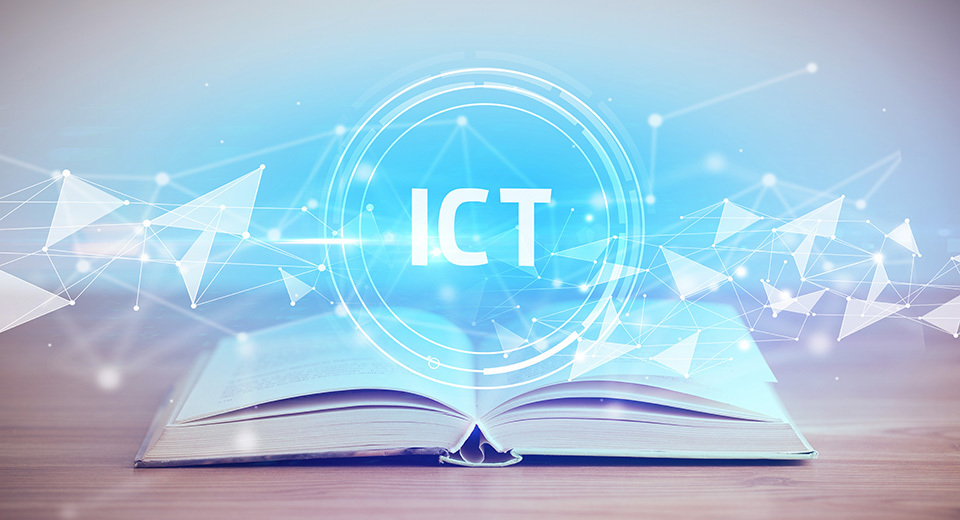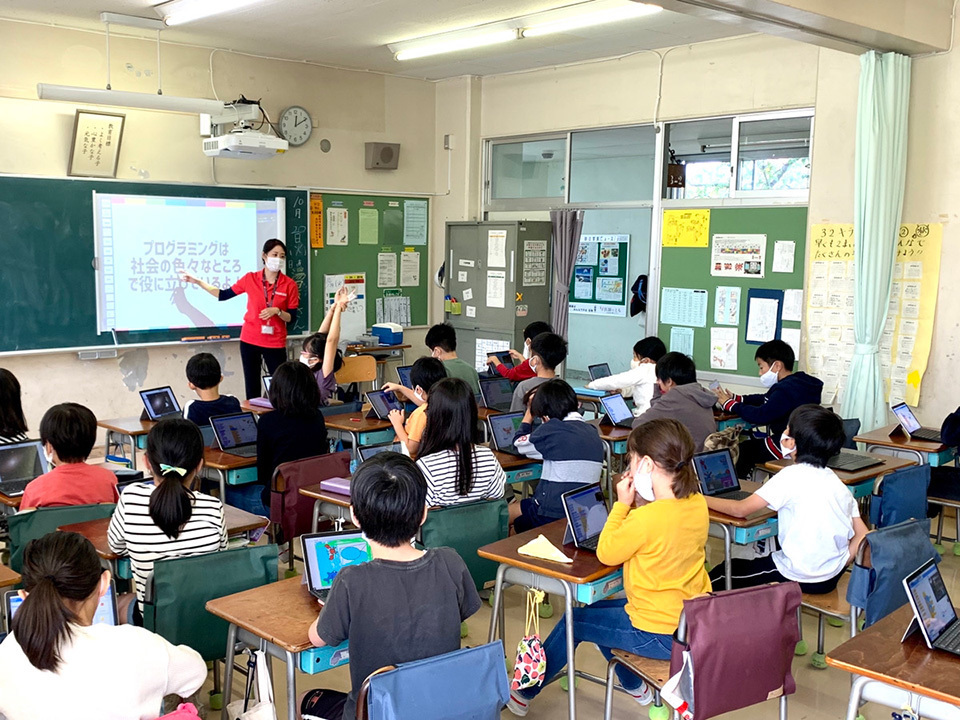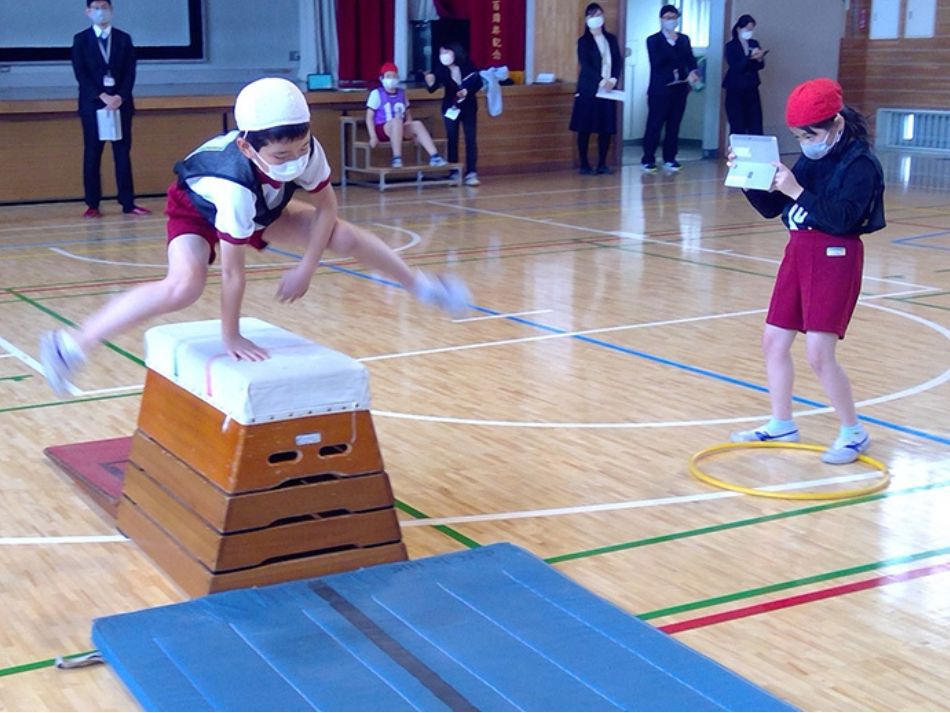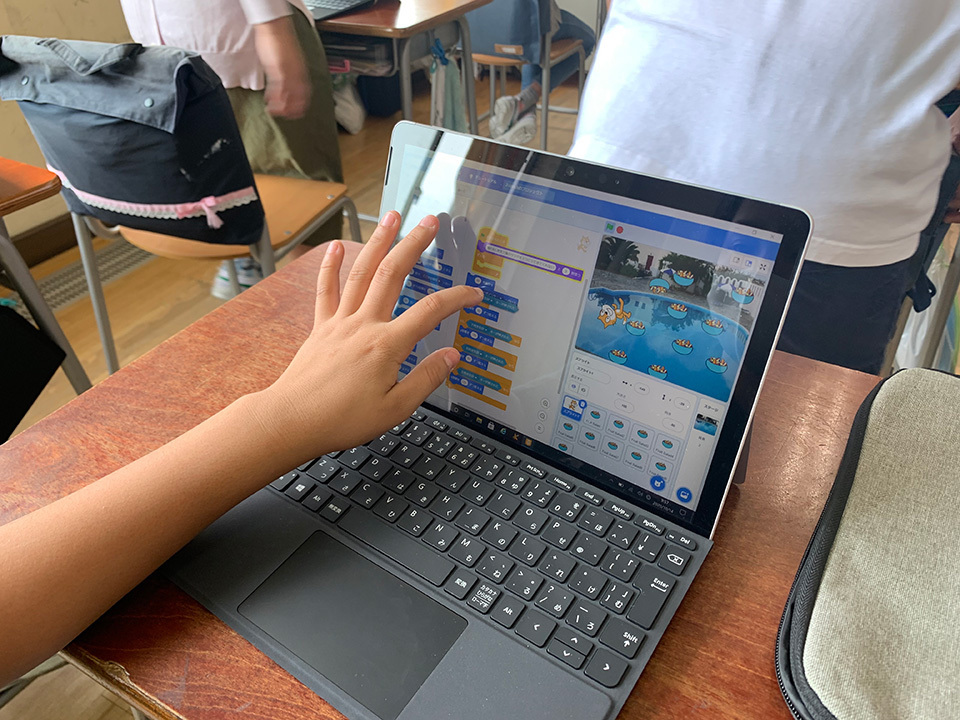In order to foster children’s competencies for living in the digitally centered future, elementary and junior high schools in Japan are providing every student with a computing device, letting them effectively make headway in ICT-based learning.

A tablet computer rests on each child’s desk. The pupils’ impressions about an assigned text—which each of them has entered in their tablets—are projected on a screen simultaneously. The children are then divided into groups in which they hold discussions and compile the notes from their individual tablets into a single sheet. This is a scene from a Japanese class at an elementary school in Shibuya City, Tokyo.

Since 2017, all elementary and junior high schools in Tokyo’s Shibuya City have provided each one of their students with a computing device. Now, tablets constitute integral parts of the classroom.
With the aim of fostering in children the ability to use information, and to also provide education that is optimized individually for each child by utilizing information and communication technology (ICT), the Japanese government initiated the Global and Innovation Gateway for All (GIGA) School Program. Under the plan, which started in fiscal year 2019 and originally was intended to last through March 2024, work was progressed steadily to equip elementary and junior high schools with computer devices and a high-speed communications network. But then COVID-19 hit, disrupting learning in some regions when schools were closed last spring, so the government made the decision to accelerate the plan, moving it up by three years. As a result, from this April, nearly all schools in Japan will start providing a learning environment in which every student has an ICT device.

In gym classes, students make use of their tablets by taking videos of themselves jumping over the vaulting box, letting them watch and correct their form.
In 2017, before the GIGA School Program was launched, Shibuya City, in central Tokyo, was loaning tablets to all of the 8,700 students attending its elementary and junior high schools, effectively creating a learning environment that lets them study anytime and anywhere, either at school or home. “It’s now normal for classrooms to have tablets,” says SAKAMOTO Takayoshi, chief of the educational guidance division of the Shibuya Board of Education. “Tablets are put to good use in all kinds of classes. In art classes, students use them to make their own animations. In gym classes, they record videos of their mat-exercise movements using red dots to indicate the places where they need to improve their form.”

While programming classes have been compulsory in elementary schools since 2020, Shibuya City has been offering such classes since even before they became compulsory, inspiring great interest among the children
As the use of tablets in classrooms was only partially realized immediately after one-to-one computing was first introduced, initiatives were required to build a system that would enable more comprehensive ICT-based education. These included assigning ICT support staff and conducting programming classes in cooperation with IT companies. Such developments have also made it easier to connect with learning resources outside of school. Given the ongoing difficulty in organizing field trips due to the COVID-19 situation, digital tools have been used to maintain children’s learning by connecting them directly to outside experts through online conferencing.
Teachers can also benefit from the new educational environment. Using digital teaching materials can reduce the amount of time spent preparing for classes, and introducing cloud-based school management systems can lead to higher efficiency in grading and other administrative work. According to Sakamoto, “ICT alleviates some of the burden that keeps teachers so busy, letting them spend more time with the children and focus more on providing instruction tailored to their individual learning needs.”
Next on the agenda is how to utilize the data gained to further improve the quality of learning. By allowing teachers to grasp each individual student’s learning status from data logging, and thus to flexibly adapt their instructions, this ICT-based education will help realize a learning environment where no child is left behind. While some challenges still need to be addressed, such as further development of digital teaching materials, Sakamoto affirms, “Our goal is to foster competencies for living in all children to prepare them for the future, digital era.” Now the digitalization of learning environments at Japanese schools is set in motion. Going forward, ICT-based education will make further progress to raise children who are empowered to think and act on their own by leveraging the power of digital devices.






























